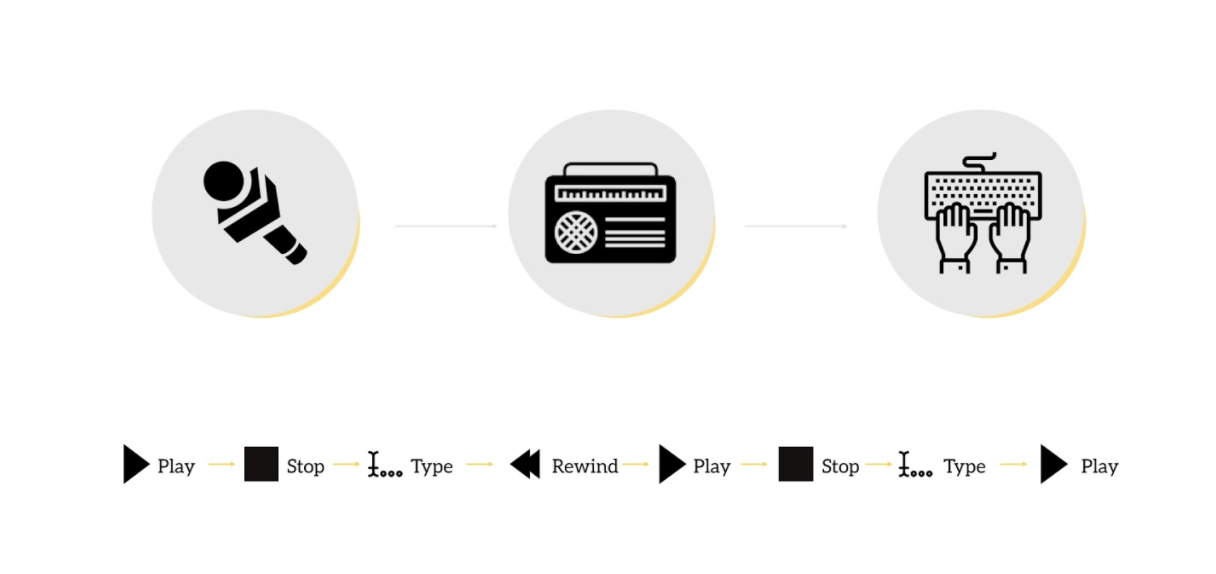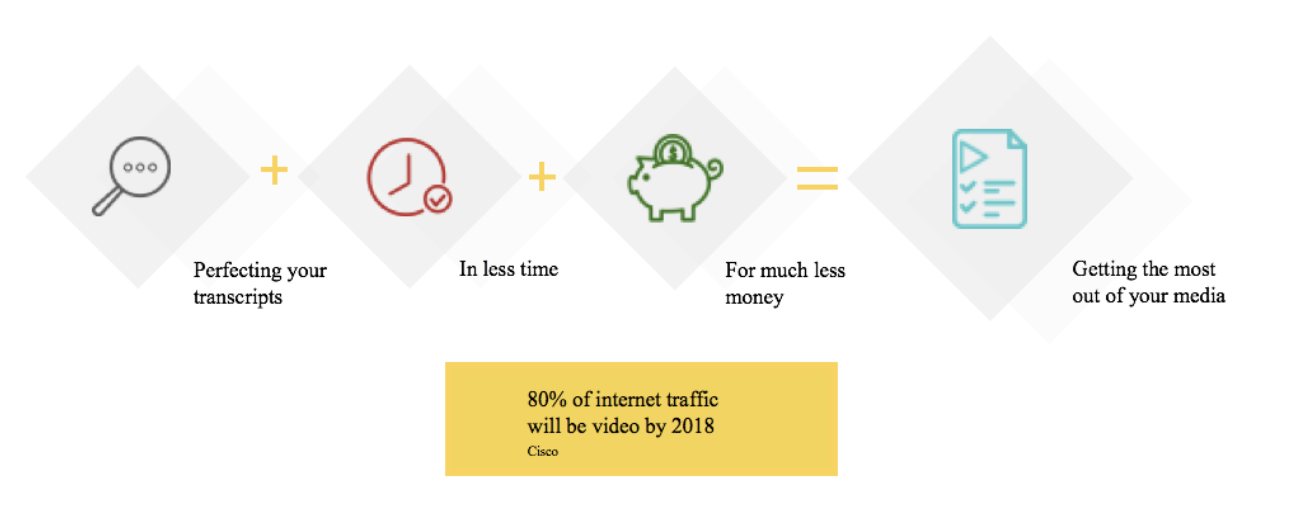Once upon a time, copywriters tapped away at typewriters and breaking news came in on teletype machines that went clackity-clack.
We've come a long way since then. Today, copywriters have Google Drive file sharing and real-time editing. Marketers have an entire suite of automated marketing technology. And journalists can instantly share whatever they're reporting on via real-time streaming and social media.
The explosion of content-related technology in the 21st century has made it easier than ever before to gather, report, distribute and share news and content. Yet one part of the modern workflow, transcription, remains largely unchanged.

It seems odd that one of the most mundane tasks in the newsroom production process, getting interviews on paper, should still be so unwieldy. But when you think about every step of the traditional transcription process, it kind of made sense:
Step 1: You would record an interview with someone who has important things to say, things that your audience really needs to hear.
Step 2: You'd playback the recording over and over again: PLAY. STOP. TYPE. REWIND. PLAY. STOP. TYPE. REPEAT. As this was happening you'd write out the transcript or, in years past, you would use a typewriter (if you're into that sort of thing).
Fast forward a generation: the typewriter is now a computer, but the transcription process hasn't changed much.
Problem: There has been no reliable and time-efficient way to get spoken words to magically appear on paper.
Solution: enter AI.
In the past few years, advances in AI automation have unlocked previously unthinkable superpowers for the everyday journalist or marketer. Three of the most important new AI-powered technologies include:
All three of these technologies are completely transforming the business world as we know it. But only one of these technologies has been huge benefits for modern professionals for a few years: automated transcription.
Cisco estimates that 80% of online traffic will be video by 2022, but search engines still can't crawl the worlds in online audio or video content. We can blame the search engines for not advancing quickly enough, but there's a better way: let's root through our toolbox to see how we can make the audio-video production process more efficient.
The key to searchable, discoverable content is accurate transcripts for our audio and video. This is the only way search engines can crawl that content effectively and deliver it to the right person at the right time.
With that in mind, media and marketing organizations need to use powerful speech-to-text tools, like Trint, to convert their audio and video files to text. This will save more time, more money and get the most of their hard-earned media.

If you work in media, you probably have some idea of how much audio and video content your organization produces over the course of a year, month or week. The same is true for marketers: content production is a huge part of the modern workflow of almost any marketing department.
Well, here's the thing. Whenever you write a new webpage or blog post, Google's 'spiders' crawl over that new text content and index it into their search engine. That way, whenever someone types in a relevant keyword, your page may show up. However, Google (and Bing, and everyone else) still can't do this for video or audio content.
So if you have an hour-long video interview posted on a webpage, Google might be able to find that podcast or embedded YouTube video if there's associated metadata and a text headline. But finding specific parts of that interview, like the content-rich keywords that make up the bulk of the interview? That hasn't been possible...until now.
' Glues video/audio to text (think karaoke)
' Integrates an interactive transcript with a video player
' Video content can be discovered through online search (SEO)
' Video becomes accessible to people with disabilities
Think online video is dark data? Think again. By integrating a video player with a transcript, now you can not only watch online video, but the words in the video become searchable by search engines. As the video plays in the Trint Player, the words in the transcript are highlighted. Audiences anywhere can read along with or without sound.
With a few clicks and an embed code, video SEO is instantly unlocked, opening up a world of searchable, discoverable video content. The Trint Player shines light on dark data.
Want to give automated transcription a test drive? Sign up for your free trial now.
{{cta('d854eab4-5718-45f1-87be-210ba2c2d1cb','justifycenter')}}